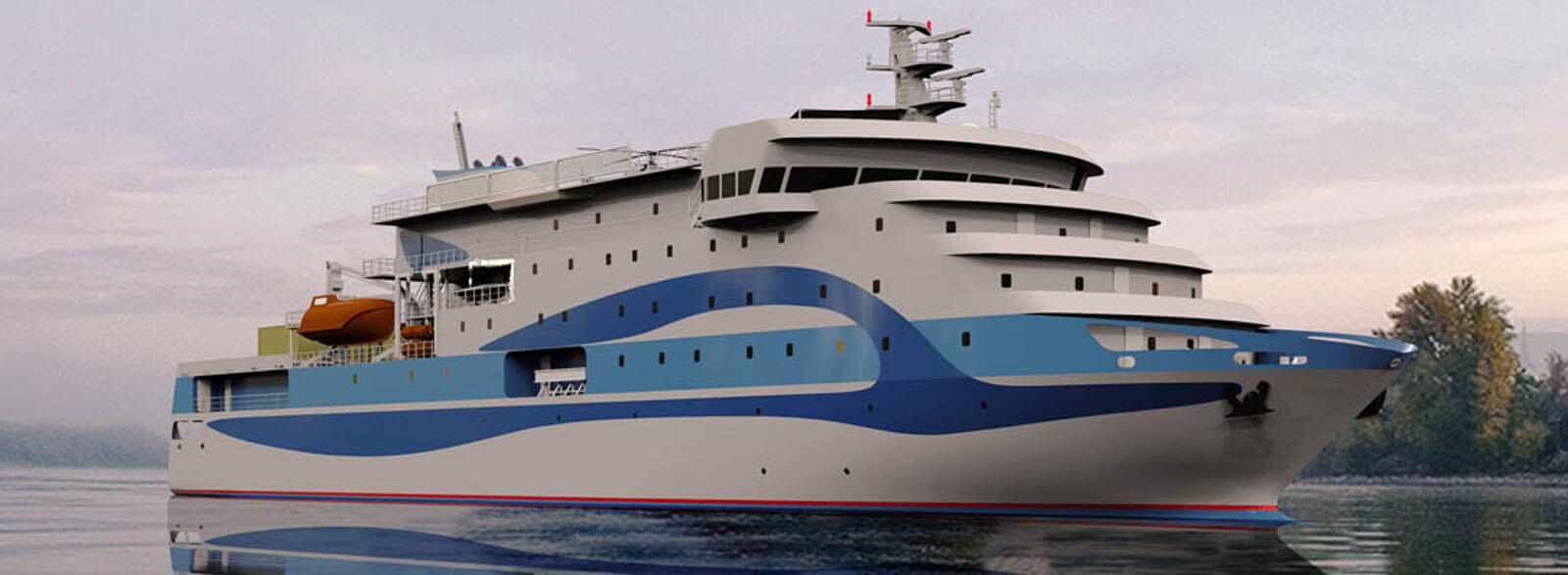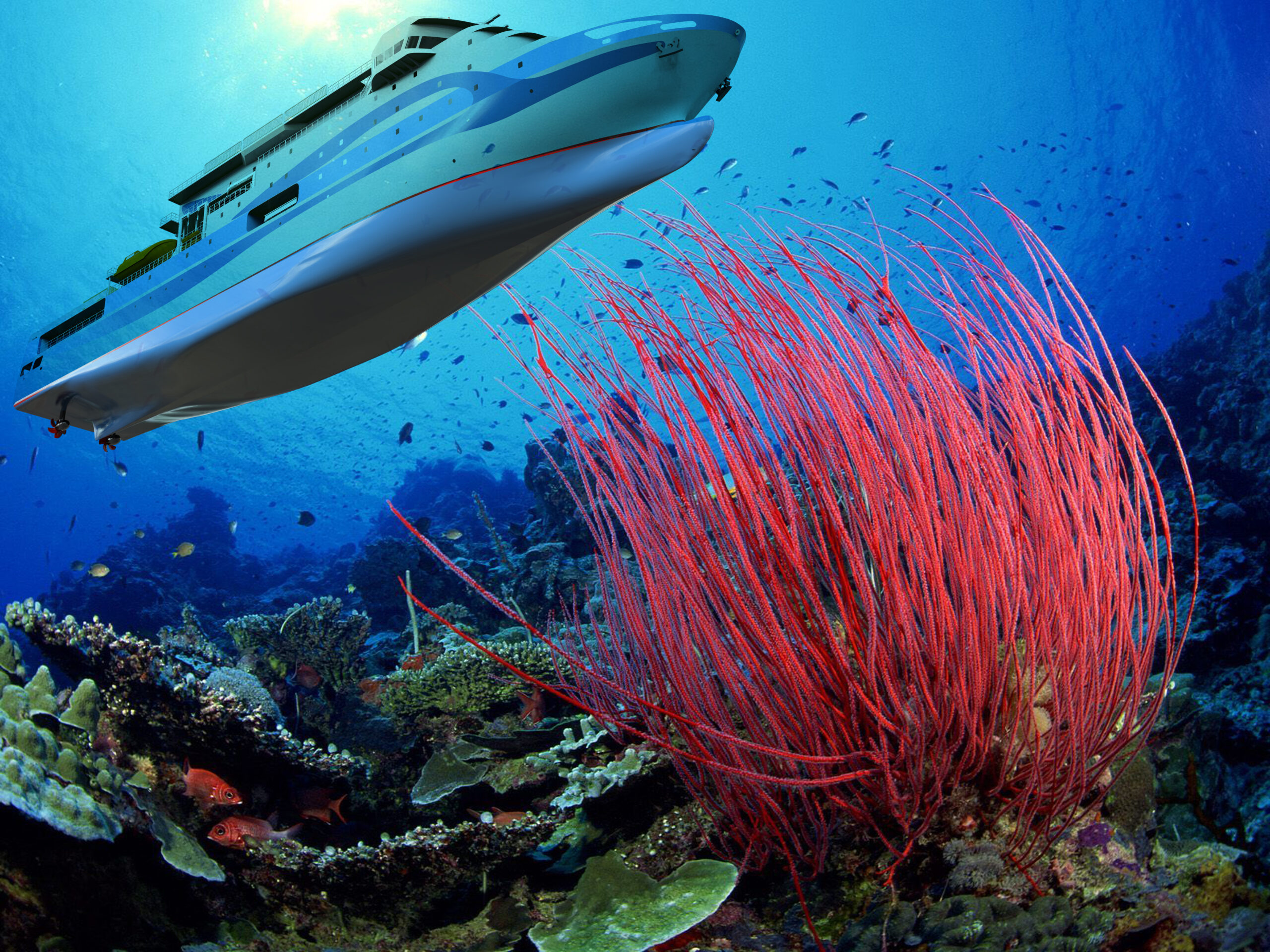Introduction
Recently, I went through a thought-provoking article published by my alma mater – Newcastle University about a gentleman using hydrophones to record underwater sounds from aquatic life in a ‘quiet‘ Sunderland water body. For those interested in reading the article, I have provided the link below:
Ears Underwater – Press Office – Newcastle University
For a moment, I wondered what would have been the results if the measurements were made in open oceans, where ships large and small criss-cross the waters, where large hydraulic hammers drive piles into the ocean floor, and where a Naval ship is testing its powerful sonars.
This is a four-part series on noise pollution in the oceans. Part 1 sets the context for the discussion. Part 2 briefs the international awareness and response to the problem. Part 3 discusses the technical and technological challenges. Part 4 looks at the future course of action.
The featured image is an artist’s impression of SEDS designed 500 Passenger vessel – ‘MV Sindhu’ owned by A&N Administration transiting through the pristine waters near the Andaman & Nicobar Islands (also known as Coral Islands).
Part I – The context
From hunter-gatherers to the sophisticated beings today, the humankind has become the undisputed leaders of our planet – expanding across geographies and multiplying in numbers and capabilities. However, we were mostly ignorant about the environmental cost of this rapid expansion until a few decades ago. With about 40% of the global population living near the coast [1], oceans have a special place in our present and future, yet they are rampantly over-exploited. While the public is conscious of the pollution from effluents and contamination in the oceans, as well as the global efforts to mitigate it, not many are aware of the noise pollution caused by human activity, predominantly commercial shipping. A large number of ocean inhabitants, especially cetaceans use sound for critical life functions such as communication, navigation, reproduction, and so on, which are severely impacted by interference from radiated underwater noise from ships.
Let us look at some statistics. The number of large commercial vessels have tripled from 1955 to 2011 and is slated to further double or even triple by 2030 (Lloyds Register, 2013). The results are evident. Shipping is the predominant source of noise in the oceans globally. The major components of noise produced by commercial vessels are in the range of 10 Hz to 1 kHz, of which the low frequency range of 10 Hz – 300 Hz is the most concerning. There are some reasons for this concern.
- The ocean noise in the low frequency range (<300 Hz) is doubling approximately every decade.
- Low-frequency noise travel long distances, as they experience little attenuation. The low-frequency ambient noise field is a summation of noise across an entire ocean basin
- Above 300 Hz, wind generated noise dominates the shipping noise
See typical underwater noise profile produced by Wenz (1962) as modified by Hildebrand to reflect modern shipping noise levels [3].

Marine mammals use sound in a wide range of frequencies, depending on the species and the function. Studies suggest that baleen whales, sea lions and seals could be highly affected as significant portions of their communication happen in the low frequency range dominated by shipping noise. The impact of this human proliferation into the cetacean habitat is still not completely understood. Potential risks are mass migration, behavioural changes, and even extinction of some species leading to imbalances in the ocean habitat.
How loud is the human activity below water? The below table gives the noise in decibels from various human actions [2].

The decibel values mentioned measure underwater noise in logarithmic scale to a reference pressure of 10–6 N/m2, called a MicroPascal (μPa). Please note that this is different from the decibel levels in airborne noise.
The first few items are military and seismic activities; and are limited to specific areas over short durations. Acoustic harassment devices and seal bombs are used to drive away marine mammals from fishing gear or other potentially dangerous areas. These typically produce noise at frequencies above 1 kHz, and are attenuated within a few miles. This brings us to low frequency noise from commercial shipping, which is pervasive over large tracts of the ocean and is increasing by the year.
What are the international bodies doing about it? Are we serious enough? How equipped are the ship designers and shipyard in dealing with this issue? We will discuss this in Part 2 – The International awareness and response to noise pollution in the oceans.
References
- “Global Goals, Ocean Opportunities,” The UN Global Compact Action Platform for Sustainable Ocean Business, New York, June 2019
- Hildebrand, Anthropogenic and natural sources of ambient noise in the ocean2009, Scripps Institution of Oceanography. ©Inter-Research Science Center (2009)
- Brandon L. Southall et al., “Underwater Noise from Large Commercial Ships—International Collaboration for Noise Reduction,” Encyclopedia of Maritime and Offshore Engineering, 2017
Vivek Ramanath
Dy. General Manager – Advanced Analysis

